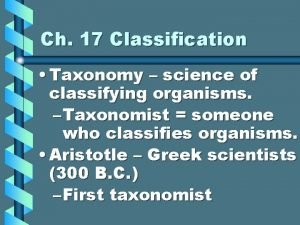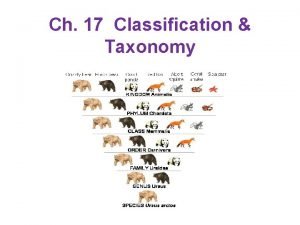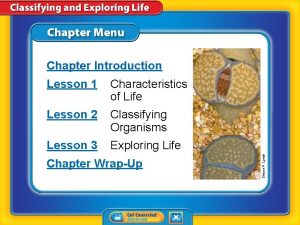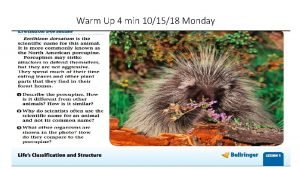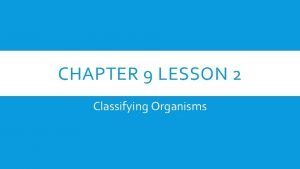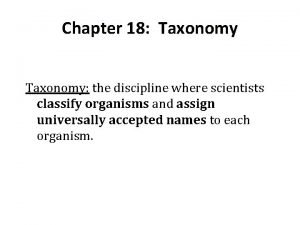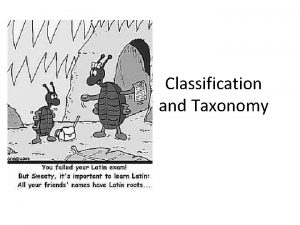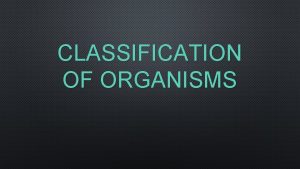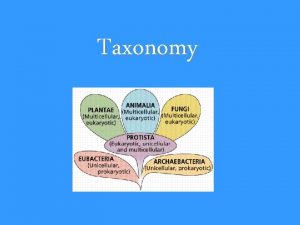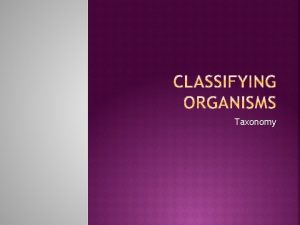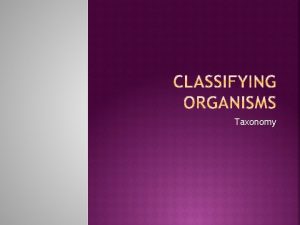CLASSIFYING ORGANISMS CLASSIFICATION AND TAXONOMY Classification is the













- Slides: 13

CLASSIFYING ORGANISMS

CLASSIFICATION AND TAXONOMY Classification is the process of grouping things based on their similarities. (What they have in common or the same) Taxonomy is the scientific study of how living things are classified. This is useful because once they are grouped scientists know a lot about the organism based on their group.

LINNAEUS Carl Linnaeus developed a naming system for all living things in 1753. It is still being used today!

BINOMIAL NOMENCLATURE Binomial nomenclature is the formal system of naming living things. It was created so there would be no confusion when talking about an organism.

RAISE YOUR HAND IF YOU KNOW WHAT THESE BIRDS ARE CALLED.

COMMONLY CALLED THE ROBIN However, one is the European Robin and the other is the American Robin. So when scientists talk about “the robin” …they may get confused as to which one they are talking about. European robin = Erithacus rubecula American robin = Turdus migratorius

HOW IT LOOKS The scientific name is always: Two word name In italics First letter of the first word is CAPITAL First letter of the second word is lower case First word is the genus name Second word is the species name (specific epithet)

LET’S PRACTICE Grey squirrel Genus: sciurus Species: carolinensis How to write it? Sciurus carolinensis

LET’S PRACTICE Striped skunk Species: mephitis Genus: mephitis How to write it? Mephitis mephitis

LET’S PRACTICE Mallard Species: platyrhynchos Genus: anas How to write it? Anas platyrhynchos

YOUR JOB! You will need to choose a living thing (that you can draw) You will be making a mini-poster of your organism, showing the common AND scientific name.

YOUR JOB! You will be completing the following: • Drawing a picture of your living organism • Writing the common name (what we call it) • Writing the scientific name (CORRECTLY)

YOUR JOB! As homework: Please come to class tomorrow with what you have chosen!! Write it down in your purple direction sheet so you don’t forget. This needs to be a very specific organism…it can’t be a frog, what type of frog?
 Human taxonomy
Human taxonomy In the discipline of taxonomy what is a domain
In the discipline of taxonomy what is a domain Discipline of classifying and naming organisms
Discipline of classifying and naming organisms The science of naming and classifying organisms
The science of naming and classifying organisms Discipline of classifying and naming organisms
Discipline of classifying and naming organisms Liger taxonomy
Liger taxonomy New taxonomy of marzano and kendall 2007
New taxonomy of marzano and kendall 2007 In the hierarchy of classification which grouping
In the hierarchy of classification which grouping Unicellular multicellular
Unicellular multicellular Classifying and exploring life
Classifying and exploring life Classifying organisms worksheet
Classifying organisms worksheet Lesson outline classifying organisms
Lesson outline classifying organisms Lesson 2 classifying organisms
Lesson 2 classifying organisms The scientific discipline of classifying organisms
The scientific discipline of classifying organisms




